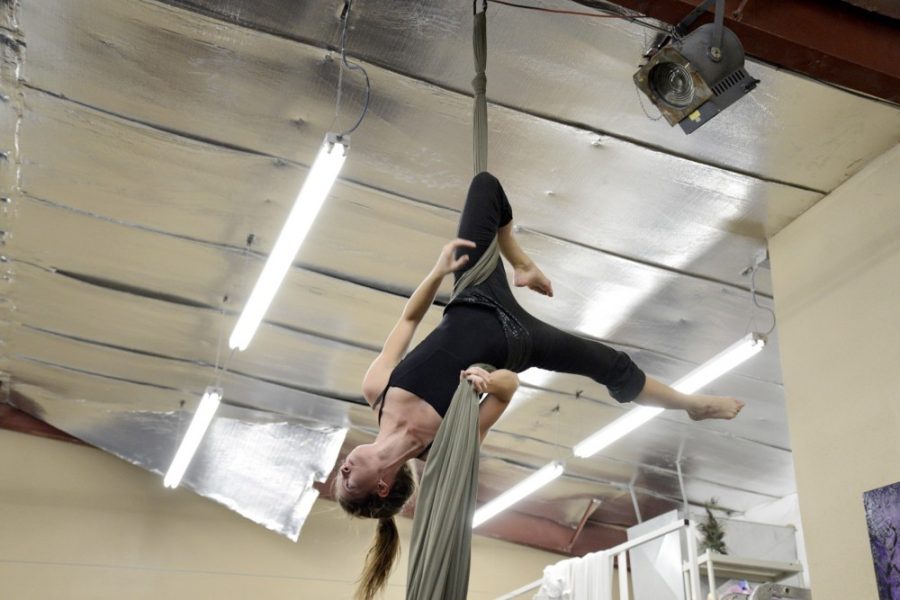Dangling high above the ground, upside-down with nothing but two pieces of synthetic fabric and their own strength saving them from a fall, Annie Mielke and Ariella Gladstein looked completely at home while practicing the art of aerial silks.
This was a fairly typical Sunday afternoon for Mielke, a junior studying marketing and German studies and an instructor at Tucson Circus Arts, and her student Gladstein, a third-year ecology and evolutionary biology doctoral candidate, who routinely find themselves hanging precariously above the ground.
Mielke said she has been doing aerial silks and other circus art forms, such as the trapeze, for almost half of her life, and has been teaching at Tucson Circus Arts for the last year and a half.
Aerial silks put performers high above the ground as they do different types of stunts, with nothing separating them and the ground but two sheets of fabric hanging in the air. There are neither safety nets nor lines, only pads at the bottom that most people would not want to fall onto from any significant height.
“For me, [aerial silks] has always been … a combination between something very athletic and something also very artistic,” Mielke said. “It is kind of a combination between a sport and dance.”
She added that she “loves to perform” and that being in front of an audience is her favorite part of doing aerial silks.
Mielke got her start in the world of circus arts at the age of 11 at Circus Juventas Youth Circus, a youth circus school in Minnesota. She continued there all the way through high school, rigorously training upwards of five days a week, she said.
Mielke, who currently teaches the multi-apparatus class and assists with instructing the aerial silks class, is at a professional skill level in her art form, said Katherine Tesch, the program coordinator at Tucson Circus Arts. And as far as Mielke’s students are concerned, she’s the perfect role model.
“To me, [Mielke] is kind of my goal; I want to be as good as her,” Gladstein said. “I will never try something if Annie doesn’t do it.”
The most difficult trick that Mielke is currently doing is called “the face drop,” which involves climbing to the very top of the silk and grabbing the fabric below her feet. After grabbing the silk, she somersaults forward with nothing stopping a fall to the ground besides the strength of her hands.
“You end up just hanging down by your hands, so you are not really wrapped,” Mielke said. “Nothing is holding you in while you do this drop.”
During these types of tricks, Mielke said she isn’t worried for her safety; she’s focused on her body position and how the trick looks.
The public can check out aerial silks and all the other circus art forms that Tucson Circus Arts offers on Dec. 13 at 7 p.m. The end of year performance is solar system-themed, with different performances from each of the classes at the school. It is free to the public with a $5 to $10 suggested donation.
Mielke said she doesn’t know what she will be doing in 10 years or even five years, but she does know she won’t be hanging up the silks anytime soon — unless she plans on hanging with them.
“I can imagine that I am still going to want to be doing these things and performing, if at all possible,” Mielke said. “It would be something that I would love to do for the rest of my life.”
Follow Ryan Revock @RyanRevock









